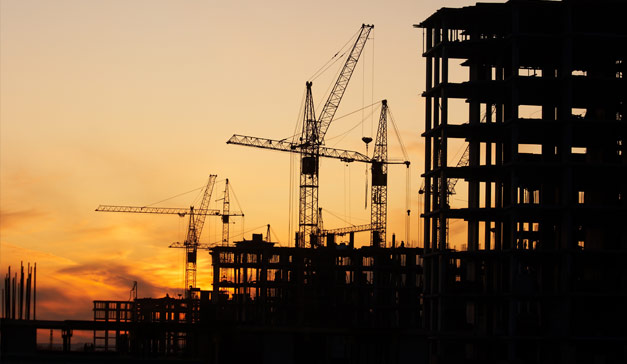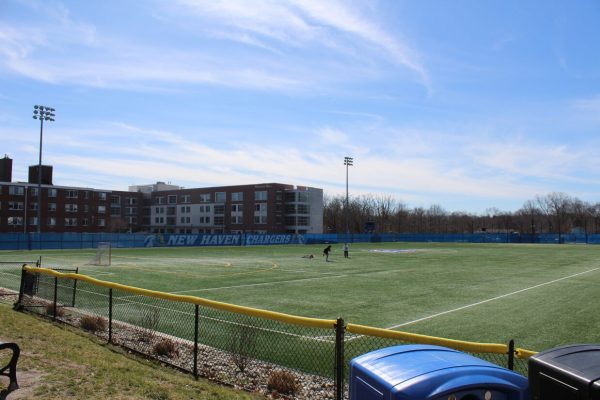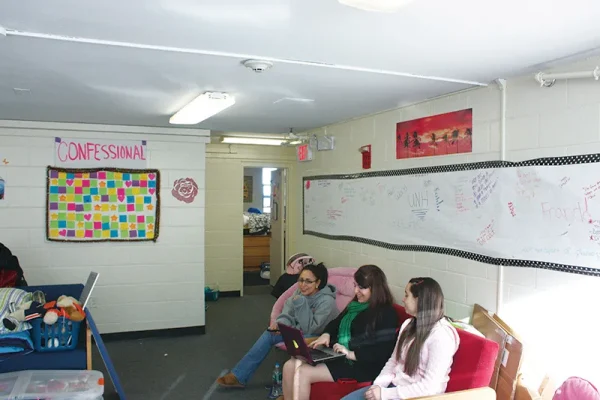America’s Infrastructure: A National Report Card
More stories from Roger Kemp
The term “infrastructure” refers to the basic facilities and installations necessary for society to operate. These include public transportation and communication systems (highways, airports, bridges, telephone lines, cellular telephone towers, post offices); educational and health facilities; water, gas, and electrical systems (dams, power lines, power plants, aqueducts); and such miscellaneous facilities as prisons, national park structures, and other improvements to real property owned by higher levels of government.
In the United States, the infrastructure components are divided into the private and public sectors. Public facilities are owned by the municipal, county, state, and federal governments. There are also special district authorities, such as the Port Authority of New York and the Los Angeles Department of Water and Power, among many others.
The American Society of Civil Engineers (ASCE)—the only professional membership organization in the nation that grades our nation’s public infrastructure—recognizes the major categories of our government’s infrastructure: aviation, bridges, dams, drinking water, energy, hazardous waste, inland waterways, levees, ports, parks and recreation, rail, roads, schools, solid waste, transit, and wastewater.
Managing and Financing America’s Infrastructure
All levels of government are facing a new era of capital financing and infrastructure management. Revenues that once were available for capital construction, restoration, and maintenance, have either diminished or evaporated entirely in recent years. Portions of the public infrastructure that were once adequate are now experiencing signs of distress, even decay, with no end in sight to the ongoing deterioration of our nation’s public infrastructure.
Local, state, and federal governments are subject to unprecedented fiscal demands for public services in an environment of limited taxation and dwindling financial resources. State government deficits are increasing. At the same time, the federal deficit is at an all-time high—exacerbated by the fact that our nation is concurrently suffering from a weakened economy. These negative fiscal circumstances, experts believe, may continue during the coming years.
Congested highways, overflowing sewers, and corroding bridges, are constant reminders of the looming infrastructure crisis that jeopardizes our nation’s economic prosperity as well as the quality-of-life for our citizens. With new grades published in 2013, the condition of our nation’s infrastructure has shown little to no improvement since receiving a collective grade of a C- in 1988 and with some areas even sliding toward failing grades.
ASCE’s 2013 Report Card for America’s Infrastructure assesses the same categories as it did in the previous survey. The grade comparisons of the various categories of America’s infrastructure between ASCE’s original 1988 survey, and its most recent survey in 2013, are highlighted below in alphabetical order:
• Aviation – Received a grade of B- in 1988, and a grade of D in 2013.
• Bridges – Received a grade of C+ in 1988, and a grade of C+ in 2013.
• Dams – While not graded in 1988, they received a grade of D in 2013.
• Drinking Water – Received a grade of B- in 1988, and a grade of D in 2013.
• Energy – While not graded in 1988, this category received a grade of D+ in 2013.
• Hazardous Waste – This category receive a grade of D in 1988 and D in 2013.
• Inland Waterways – While not graded in 1988, they received a grade of D- in 2013.
• Levees – While not graded in 1988, they received a grade of D- in 2013.
• Parks and Recreation – While not graded in 1988, they received a grade of C- in 2013.
• Ports – While not graded in 1988, they received a grade of C in 2013.
• Rail – While not graded in 1988, this category received a grade of C+ in 2013.
• Roads – Received a grade of C+ in 1988, and a grade of D in 2013.
• Schools – While not graded in 1988, this category received a grade of D in 2013.
• Solid Waste – Received a grade of C- in 1988, and a grade of B- in 2013. This is the only infrastructure category to increase its grade since the original “graded” evaluation was done some 25 years ago.
• Transit – Received a grade of C- in 1988, and a grade of D in 2013.
• Wastewater – Received a grade of C in 1988, and a grade of D in 2013.
The average public infrastructure grade for our nation was a C- in 1988 and a D+ in 2013.
In short, U.S. roads, bridges, sewers, and dams, are crumbling and need a $2.2 trillion overhaul, but prospects for improvement are grim. This is the amount of money necessary over the next five years to restore and rebuild major components of our nation’s public infrastructure. The nation’s drinking water system alone needs a public investment of $11 billion annually to replace facilities and to comply with regulations to meet our future drinking water needs. Federal grant funding in 2005 was only 10 percent of this amount. As a result, aging wastewater systems are discharging billions of gallons of untreated sewage into surface waters each year, according to ASCE’s report.
And the signs of our deteriorating infrastructure go on! Poor roads cost motorists $54 billion a year in repairs and operating costs, while American’s spent 3.5 billion hours a year stuck in traffic jams. The country’s power transmission system also needs to be modernized, the report said. While demand continues to rise, transmission capacity failed to keep pace and actually fell by 2 percent in 2001. As of 2003, 27 percent of the nation’s bridges were structurally deficient or obsolete, a slight improvement from the 28.5 percent in 2000. It is alarming to note, but since 1998 the number of unsafe dams in the country rose by 33 percent to more than 3,500.
Several national professional associations have officially endorsed ASCE’s 2013 Report Card for America’s Infrastructure, including the following ones:
• American Public Works Association (APWA)
• National Stone, Sand & Gravel Association (NSSGA)
• U.S. Conference of Mayors (USCM)
• National Heavy and Highway Alliance (NHHA)
• American Road and Transportation Builders Association (ARTBA)
• Association of State Dam Safety Officials (ASDSO)
• National Association of Clean Water Agencies (NACWA)
• American Shore and Beach Preservation Association (ASBPA).
For a complete list of the endorsing organizations, refer to ASCE’s website (www.asce.org).
National Leadership Is Needed
The views expressed by many experts who research and write on infrastructure issues point to a general agreement on the magnitude and complexity of this problem. Little agreement exists, however, on a consensus of how to achieve a comprehensive nationwide solution to restoring and maintaining America’s public infrastructure. One point, though, seems obviously clear. The necessary leadership and policy direction required to properly address this national issue must come from the highest level of government. It is only within a national policy framework that states, counties, and cities, can work together to improve the current condition of our public works facilities. Local and state governments alone, because of their many diverse policies, multiple budget demands, and varied fiscal constraints, cannot be relied upon to achieve the comprehensive financial solution required to solve this national problem.
The prevailing philosophy of our national government has been to let the lower levels of government (states, counties, and cities) solve their own infrastructure problems, regardless of the nature of their complexity or the magnitude of the funds needed. If a solution is to be forthcoming, the political posture of our government needs to become more positive and proactive. Assertive federal government leadership must make the difficult policy decisions, as well as approve the funding required, to solve our country’s infrastructure problem. Fundamental changes are needed to redirect national priorities about how public infrastructure investments are made. Officials at all levels of government must recognize that they can no longer build public facilities without adequately maintaining them in future years.
The Future
As the severity of this issue escalates, and citizens become more aware of the increased costs of postponing a decision on public infrastructure, taxpayers may become more politically involved in solving this issue in the future. Local taxpayers cannot be expected, however, to foot the entire bill for a solution, since the majority of our country’s capital assets have been constructed over the past several decades—some more than a century ago—and frequently with the assistance of grant funds from the federal government. Cities, counties, and states have relative degrees of wealth based on their taxing capacity, bonding levels and ratings, and budgetary reserves. Because of this, many lower levels of government do not have the financial capability, even with increased taxation, to adequately address those issues related to restoring and maintaining our nation’s infrastructure. This bullet is “too big to bite” by lower levels of government alone.
It is safe to say that most citizens throughout the country already feel overtaxed by all levels of government. Even though citizens may be willing to assist financially, a major redirection of federal government funds will be required for a truly comprehensive and coordinated nationwide response to our country’s outstanding infrastructure issues and problems.
Even with some additional taxes and user fees, funding will be limited from the lower levels of government. For this reason, argue those who deal with infrastructure issues, national priorities must be established for the replacement and restoration of capital facilities for all levels of government, starting with those projects that are necessary to ensure the public’s security, health, and safety. Funds from existing federal grant programs must be targeted for infrastructure projects nationwide – such as those from less-important operational programs with limited or only special-interest constituencies.
To the President: Our nation is not “on the road to ruin,” as some experts explain, but merely going through the transition period required to properly sort out and arrive at a politically acceptable long-term solution to this critical and complex policy issue that plagues all levels of government—federal, state, county, and city alike.
If the U.S. infrastructure is allowed to deteriorate even further in the future, possibly to the point of decay, the cost of resolving this issue will escalate significantly in future years for all taxpayers. If this happens, economic development programs will also continue to suffer, and the revenues they could generate will not be available to assist in restoring our public infrastructure. For these reasons, I strongly urge the President to make the restoration of America’s public infrastructure a national funding priority.
The previous administration, headed by President Barack Obama, with the assistance of Congress, passed the American Recovery and Reinvestment Act of 2009. This legislation, for the first time in a number of years, includes substantial funding (upwards of $150 billion) for public investment in new infrastructure projects, as well as the restoration of our nation’s existing infrastructure network.
This new federal stimulus package was certainly a step in the right direction! It was not funded, however, during the following fiscal year. Now that this issue has been acknowledged as a national priority by the new President, hopefully additional funding will be made available for this purpose during the coming year. Such legislation and funding will prove that America is “not on the road to ruin” but merely “on the road to recovery.”










